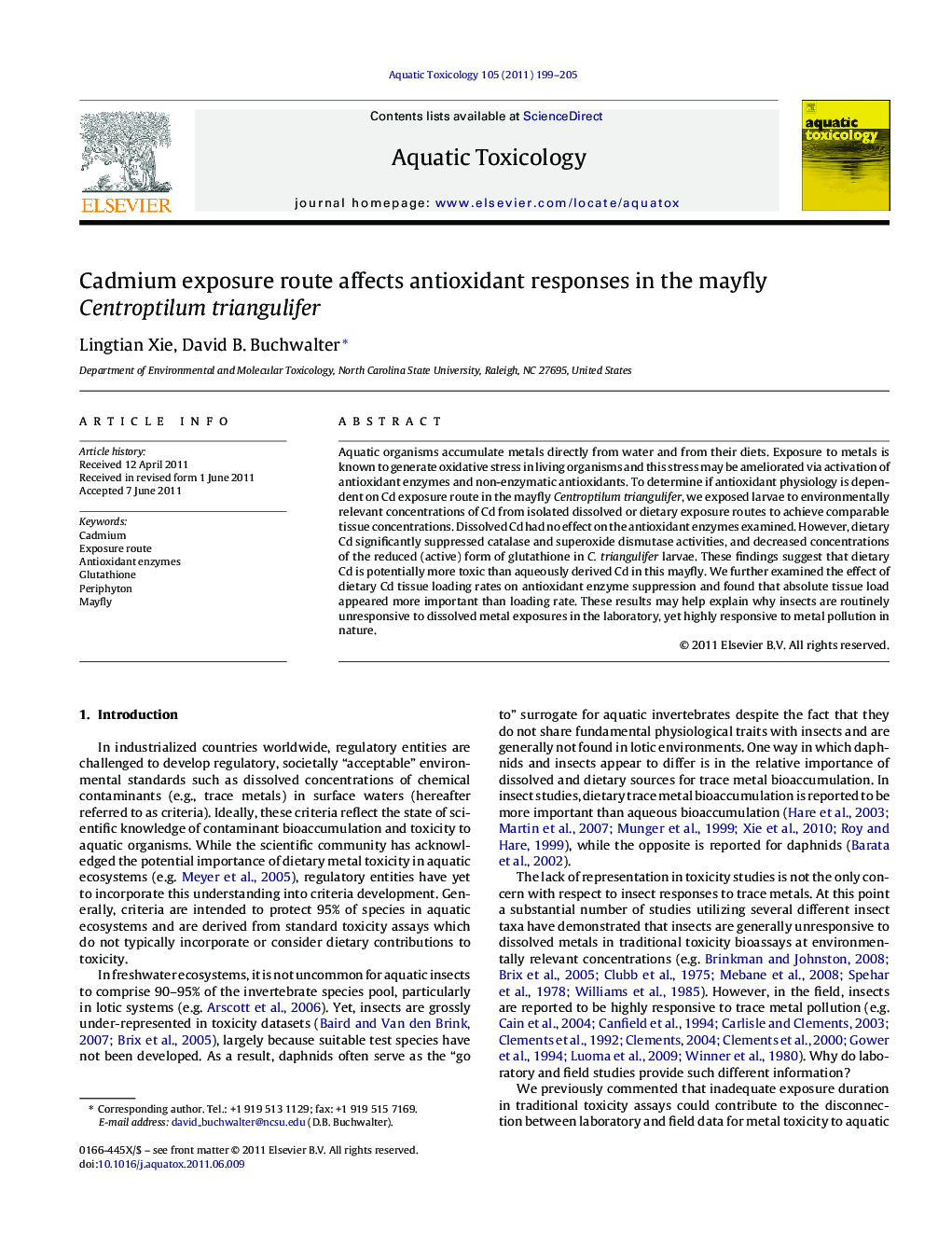| Article ID | Journal | Published Year | Pages | File Type |
|---|---|---|---|---|
| 4529804 | Aquatic Toxicology | 2011 | 7 Pages |
Aquatic organisms accumulate metals directly from water and from their diets. Exposure to metals is known to generate oxidative stress in living organisms and this stress may be ameliorated via activation of antioxidant enzymes and non-enzymatic antioxidants. To determine if antioxidant physiology is dependent on Cd exposure route in the mayfly Centroptilum triangulifer, we exposed larvae to environmentally relevant concentrations of Cd from isolated dissolved or dietary exposure routes to achieve comparable tissue concentrations. Dissolved Cd had no effect on the antioxidant enzymes examined. However, dietary Cd significantly suppressed catalase and superoxide dismutase activities, and decreased concentrations of the reduced (active) form of glutathione in C. triangulifer larvae. These findings suggest that dietary Cd is potentially more toxic than aqueously derived Cd in this mayfly. We further examined the effect of dietary Cd tissue loading rates on antioxidant enzyme suppression and found that absolute tissue load appeared more important than loading rate. These results may help explain why insects are routinely unresponsive to dissolved metal exposures in the laboratory, yet highly responsive to metal pollution in nature.
► In the mayfly Centroptilum triangulifer, antioxidant enzymes catalase and superoxide dismutase were suppressed by dietary cadmium (Cd) exposures, but not dissolved exposures. ► Dietary Cd reduced concentrations of active glutathione in whole insect homogenates. ► These findings suggest that diet derived Cd is potentially more toxic than aqueous derived Cd in this mayfly, and may help explain the disconnection between laboratory and field data for aquatic insect responses to trace metal pollution.
